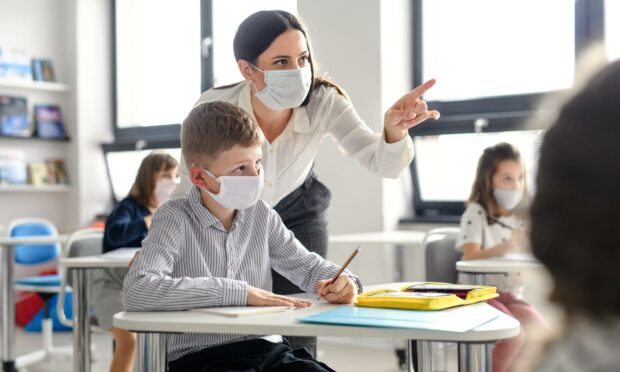Thousands more teachers are being brought into Scotland’s classrooms as £1 billion is committed to help education recover and close the poverty-related attainment gap.
A further 3,500 teachers and 500 support staff will be recruited during this parliamentary term – over and above the 1,400 recruited during the pandemic – as part of the Scottish Government’s strategy to tackle the impact of Covid-19 on schoolchildren.
In the plan published on Tuesday morning, the government also set out its intention to expand funded early learning and childcare for children aged one and two, with low-income families to benefit first.
Other support will include:
- free school breakfasts and lunches all year for P1 to P7 children
- digital devices for every child
- abolition of fees for instrumental music tuition
- online revision classes for those sitting exams in 2022, with targeted support for those most in need
- access in schools to mental health and wellbeing support, including counselling
Education Secretary Shirley-Anne Somerville said the “ambitious” plans would aid recovery across the education sector.
She said: “Schools are still dealing with the pandemic and we will continue to support them through these challenging time.
“However, as a government we must also be focused on recovery.
“Supporting children and young people remains our top priority, and almost £500 million of additional funding has already been committed during 2020/21 and 2021/22 as part of education recovery.
At the heart of all of this is our children and young people.
Education Secretary Shirley-Anne Somerville
“Of this, £240m is to recruit extra staff to ensure resilience and to provide additional support for learners and teachers.”
Ms Somerville set out the Scottish Government education recovery strategy as she visited the site of the new site of the new £47.2 million Wallyford Secondary Learning Facility in East Lothian.
She said: “At the heart of all of this is our children and young people, who we will ensure have the opportunities they need to fulfil their potential in school and beyond.”
However, teaching union the EIS described the strategy as a “missed opportunity”.
‘No promotion of smaller classes’
General Secretary Larry Flanagan welcomed more teachers and a planned reduction in class contact time but said: “The plan largely restates existing work streams and fails to promote a single big initiative such as a reduction in class sizes, which would catalyse an education recovery programme and bring immediate benefits to Scotland’s children and young people.
“Smaller class sizes, even on a limited basis as a starting point, such as P2 and P3 or S1 and S2, would mean more teacher time per pupil and assist with targeted interventions where the pandemic has impacted disproportionately on children’s lives.”
Clear evidence that school closures during lockdown had a detrimental effect on children’s wellbeing was reported by the government’s advisory subgroup on education and children’s issues, particularly for those in already adverse circumstances.
An Audit Scotland report on education published in March found some aspects of performance in some council areas had worsened, and that the poverty-related attainment gap remained wide, with inequalities exacerbated by Covid-19.
